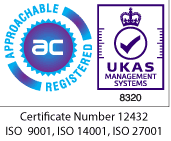Process
Change Management
Scalable CMaaS to transform the delivery of your Change Initiative
70% of change initiatives fail to achieve their goals—what if there was a better way?
Our Change Management capability combines global expertise, agile methodologies, and a focus on your workforce to support the delivery of complex change initiatives.
We provide consistent and transparent change management strategies, tailored to the specific context and objectives of each and every change initiative.
Get it right first time.
Our Change Management services are run by Daniel Fitzsimmons. Daniel is an accomplished P&L manager with over 20 years of experience in senior executive roles in the automotive industry.
What are your ongoing
Change Management Challenges?
Lack of internal capacity
Internal capacity is crucial for managing the intricate web of tasks, deadlines, and stakeholder engagements inherent in transformation projects. When a business lacks sufficient skilled personnel, the execution of new initiatives will suffer.
Stakeholder resistance
Natural human fears of change are magnified by the complexities of interdepartmental dependencies, diversity of interests, and the challenge of aligning minds towards a common objective.
Ineffective & inconsistent change methodologies
Varying methodologies across different departments or initiatives can result in fragmented efforts, duplicated work, and a dilution of focus and resources.
Solving your barriers to change.
Our Change Management Solution

1| Initiate
The Initiation process is the most critical component of any change activity. It requires a blend of strategic vision, effective communication, and a commitment to inclusivity.
2| Plan
We take the planning phase seriously, undertaking a comprehensive analysis of the project leadership landscape, timelines, milestones, and key performance indicators.
3| Execute
Successful project execution requires a well-defined project management methodology, appropriate tools scaled to the job, effective communication, and a monitoring mechanism.
4| Control
We establish performance metrics to monitor the change implementation, ensure compliance with your goals, and address deviations promptly through corrective actions.
Bringing years of world class experience to your next project
Benefits of our model
Objectivity
Access to a pool of experienced and qualified change professionals who can adapt to different situations and requirements
Flexibility
Adjust the level and type of support according to the changing needs and priorities of your change programme
Alignment & Integration
Align change management with project and programme management, ensuring a holistic and coordinated approach
Transparency
Accountability of the change management process and outcomes, enabling clear communication and reporting
Continuous Improvement
Using coaching, playbooks, agile methodologies and feedback
Human Capital
We measure your change readiness and workforce resilience to assess the impact of change and address resistance in your organisation
Our Change Management service is led by Dan Fitzsimmons
Partner - Change Management, Business Transformation & Automotive Services
Dan is an accomplished P&L manager with over 20 years of experience in senior executive roles in the automotive industry across Asia (Japan, China & Korea).
As a consultant he has worked with multiple fortune 500 companies, delivering complex business change and transformation programmes, focusing on process development, value stream mapping and business system alignment. Dan has worked extensively with IT groups but has experience across the entire organisation value chain.
Dan is experienced at end-to-end process mapping, M&A post-integration alignment, operational metrics, sales models, communication strategies and human capital management. He lives and works in Cambridge, UK.
Our team can be your team
Our Change Management team includes a range of diverse talent from experts who all have direct CMaaS experience but also work in other areas of business and sales transformation.
We can build the ideal team to suit your business challenge, with services that you can bring in or turn off as necessary throughout the duration of the project.
Our Change Management Experts
Jason Jennings
Jason is an adviser to numerous organisations and has extensive senior executive experience in the information and communications technology industry and is the Managing Partner for Digital Transformation and lead for Cambridge MC’s Project Management as a Service capability.
Get in touch with our Consultants today
Change Management Insights

Case Studies
Our team has had the privilege of partnering with a diverse array of clients, from burgeoning startups to FTSE 100
companies. Each case study reflects our commitment to delivering tailored solutions that drive real business results.
CASE STUDIES
A little bit about Cambridge MC
Cambridge Management Consulting is a specialist consultancy drawing on an extensive global network of over 200 senior executives in 22 countries.
Our purpose is to help our clients make a better impact on the world.
ABOUT CAMBRIDGE MC











